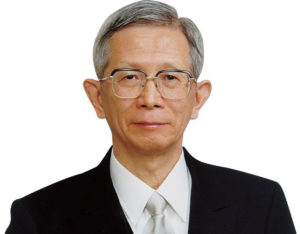
| Adapted from Special Feature on Pulse Oximeters: The invention that changed the paradigm of patient safety around the world. (LiSA (1340-8836) vol28 No3 Page237-308, 2021.03 (in Japanese)
Disclaimer: The information provided is for safety-related educational purposes only, and does not constitute medical or legal advice. Individual or group responses are only commentary, provided for purposes of education or discussion, and are neither statements of advice nor the opinions of APSF. It is not the intention of APSF to provide specific medical or legal advice or to endorse any specific views or recommendations in response to the inquiries posted. In no event shall APSF be responsible or liable, directly or indirectly, for any damage or loss caused or alleged to be caused by or in connection with the reliance on any such information. |
Pulse Oximeters: The Invention That Changed the Paradigm of Patient Safety Around the World – A Japanese Perspective
by Katsuyuki Miyasaka, M.D., Ph.D.
I am from a generation that experienced anesthesiology before the development of pulse oximeters. I was studying abroad in North America from 1973–1977, when Takuo Aoyagi, PhD, envisioned the principle of pulse oximetry. This was just about the time when Minolta began selling a finger-type device, and I knew nothing of Aoyagi’s existence or the idea of pulse oximeters. At that time, it was hard to get up-to-date information. International telephone calls cost 8,000 yen for three minutes (the equivalent of 50,000 yen or US $500 now). Japan was just starting to shed the image of Made in Japan = cheap and poorly made. The Hewlett Packard 8-wavelength ear oximeter was already in use at a research laboratory. Although it appeared accurate, it seemed to be cumbersome for clinical use… [Continue]
 The Anesthesia Patient Safety Foundation (APSF): A 35 Year Commitment to Patient Safety
The Anesthesia Patient Safety Foundation (APSF): A 35 Year Commitment to Patient Safety
by Steven Greenberg, MD, FCCP, FCCM
In the 1970’s and 1980’s, anesthesia adverse events had reached a tipping point. It was approximated that anesthesia related mortality prior to 1985 was 1:10,000 healthy patients. A highly publicized… [Continue]
 Pulse Oximetry and Innovation – Ability to Translate Invention to Innovation
Pulse Oximetry and Innovation – Ability to Translate Invention to Innovation
by Hirokazu Ogino
On June 20, 2015, I witnessed a historical moment in the ballroom of the Waldorf Astoria hotel in New York. Dr. Takuo Aoyagi, who invented pulse oximetry, was being awarded a Medal for… [Continue]
 Pulse Oximetry: The Heart of Lifebox’s Work – Honoring Dr. Takuo Aoyagi
Pulse Oximetry: The Heart of Lifebox’s Work – Honoring Dr. Takuo Aoyagi
by Kitty Jenkin; Alex Hannenberg, MD; Atul Gawande, MD, MPH
Dr. Takuo Aoyagi’s invention of the pulse oximeter has saved the lives of millions of people across the globe. After the sadness of his death this year, Lifebox, a non-profit founded… [Continue]
 The Development of Pulse Oximeters in Japan: Good Competitors, Nihon Kohden and Minolta Camera
The Development of Pulse Oximeters in Japan: Good Competitors, Nihon Kohden and Minolta Camera
by Ikuto Yoshiya; Akio Yamanishi
The pulse oximeter is currently one of the most indispensable devices in the medical world, like the electrocardiogram or the sphygmomanometer. Even in early spring, 2021, as SARS-CoV-2 is still… [Continue]
 The Ratio of Ratios and the Nobel Prize
The Ratio of Ratios and the Nobel Prize
by Kirk Shelley MD, PhD
I was truly heartbroken to hear of Dr. Aoyagi’s passing. His remarkable genius created the device I have spent most of my life devoted to studying. He was a warm and gentle man who was profoundly humble… [Continue]
 Nellcor: Continuous Perioperative Oximetry Comes to North America
Nellcor: Continuous Perioperative Oximetry Comes to North America
by David J Steward MB BS, FRCPC
Instruments intended to non-invasively measure the oxygen saturation of arterial blood were introduced as early as 1942. Very rarely their potential value as a monitor in anesthetized patients was evaluated, as for example… [Continue]
 Aoyagi’s Legacy in the US: What Influenced Its Acceptance?
Aoyagi’s Legacy in the US: What Influenced Its Acceptance?
by Jeffrey B. Cooper, Ph.D.
While Takuo Aoyagi’s name was not widely known in the US, his invention of a practical way to monitor oxygen saturation has had a huge impact on healthcare, on anesthesiology in particular… [Continue]
Adoption of Pulse Oximetry into the JSA Anesthesia Safety Guidelines – The Brilliance of Aoyagi’s Intellectual Legacy – Talk of Nobel Prize
by Shosuke Takahashi, MD
Different Roles of Japanese and US Industry in the Clinical Introduction of Pulse Oximeters: Long Way from Development to Commercialization
by Hironami Kubota
Using a Fundamental Approach to Improve the Accuracy of Pulse Oximetry – The Research to which Dr. Aoyagi Devoted His Life
by Kazumasa Ito
Pulse Oximeter: Dissemination in Neonates and Its History
by Hiroshi Nishida, MD, PhD
How Pulse Oximetry Influenced Medicine and How Its Evolution Will Influence Medicine
by Joe Kiani, BSEE, MSEE
The Role Played by an Import Company in Introducing Pulse Oximetry to Japan: Me, My Company and Pulse Oximeters
by Yasuhiko Sata
Commemoration of Dr. Takuo Aoyagi’s Impact: A Tree that was Heard to Fall
by Robert J. Kopotic, MSN, RRT, PhDh

